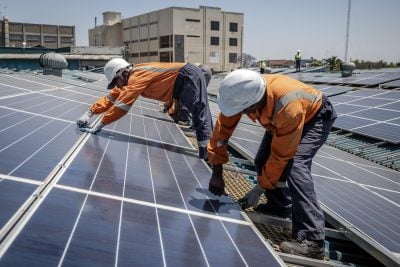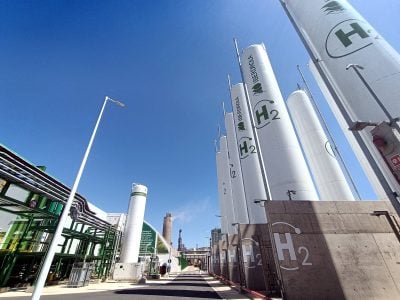Few issues generate more controversy than water. Most people feel that everyone should have access to sufficient water supplies as of right; yet reservoirs, wells, pipelines and treatment plants must somehow be financed. Population growth, urbanisation and industrialisation are all acting together to increase the pressure on Africa’s existing water and wastewater grids, yet there are signs of success in several parts of the continent. Report by Neil Ford.
Tanzania provides an excellent example of the progress that is being made and the challenges that have yet to be met. The government of Tanzania states that it is on course to provide water supplies to between 90% and 100% of the country’s urban population by the end of 2014, with a parallel 65% target for rural citizens.
The goals were set as part of government efforts to achieve the Millennium Development Goals and also in response to the collapse of the private sector water management plan for Dar es Salaam. The 65% target has also been included in the government’s poverty reduction strategy for rural parts of the country.
Speaking at the seventh Joint Water Sector Review, water minister Jumanne Maghembe said: “Currently, water and sanitation projects have been completed in Tanga, Moshi, Arusha, Mbeya, Iringa, Songea, Mtwara and Shinyanga that aim at providing over 95% water coverage.” Urban centres with ongoing projects include Bukoba, Dar es Salaam, Dodoma, Lindi, Morogoro and Musoma. In October, the Dar es Salaam Water and Sewerage Authority (DAWASA) announced that it had secured a $178m loan from the government of India to help fund water projects in the city.
DAWASA’s acting director of technical services, Romanus Mwang’ingo, commented: “We expect to end water scarcity by 2014. Once we start implementing the project, our programme will go hand in hand with the installation of more efficient water pumps at both Upper and Lower Ruvu stations. Due to the low capacity or our systems, there has been a huge scarcity of water supply to Dar es Salaam residents. Some get water twice a week while others do not get it at all.”
Delhi’s loan will be used to improve Upper Ruvu capacity, while the Lower Ruvu scheme has benefited from a $38m grant from the Millennium Challenge Corporation.
Remaining problems
However, there are still problems with red tape, the nature of some of the solutions chosen and the lack of joined-up thinking.
Indeed, the very nature of the sector and its funding tends to generate a piecemeal approach. A small village or suburb requires piped water and so a solution is found and funding identified, occasionally from the private sector, more often from government and most often of all through donor support. Too little heed is paid to how this will fit into the wide picture of water supply and wastewater disposal over a wider area.
Tanzanian Minister Maghembe said: “At the moment, wells are being sunk next to the water pipeline from Lake Victoria to Shinyanga instead of giving the people clean and purified water from the water pipe at probably 10% of the current price. I call upon my team to look very closely at these projects.”
An approach more comparable with that of the power sector is required, whereby large and small projects are integrated to ensure the maximum possible geographical and demographic service coverage. Rather than seeking to provide piped services to every home, the government has opted to achieve more rapid progress by ensuring the construction of communal water pipes and latrines where appropriate. In the long term, the provision of services to individual homes would be preferable but there is simply insufficient money to achieve this at present.
About a decade ago, it seemed as if privately owned utilities would take over the management of water services in many parts of Africa. High-profile concessions were awarded in Nelspruit in South Africa and Dar es Salaam, Tanzania, with both the Kenyan and Nigerian governments planning their own tender processes.
Following the ‘landlord’ model common in the port sector, for instance, the physical infrastructure of a water system was supposed to remain state owned but private companies would bid to operate and extend them over a fixed number of years.
Private sector participation
However, the concession awarded to a consortium including Biwater and Gauff Ingenieure in Dar es Salaam was revoked, while many South African communities successfully campaigned against the perceived “privatisation” of water services in their own areas. Several other governments abandoned their concession plans.
Private sector management therefore remains restricted to isolated areas across most of the continent, although French utilities are still important players in North Africa and parts of Francophone sub-Saharan Africa.
As a result, it has largely been left up to governments to improve the provision of water services, usually with financial support from international financial institutions and donor agencies. A big trend over the past couple of years, however, has seen local government play a much greater role in developing water projects, particularly in Tanzania, Nigeria and Ghana.
Nevertheless, it would be wrong to argue – as many commentators have done – that the private sector is now out of the picture. Most of the actual construction and engineering projects are actually carried out by the same firms that have management ambitions. The key difference is that once they have completed their work, they usually hand control over to the appointed state-owned institution, often either a utility or a local authority. British firm Biwater remains active across the continent. In December, it secured a contract to develop a drinking water project in Kumawu in Ghana, following its completion of the Kpong Rural Pipeline in the same country.
In nearby Nigeria, it is constructing the lower Usuma Dam treatment plant and has secured other contracts from various state governments. On the opposite side of the continent, Biwater is operating a new water treatment plant in Omdurman, in Sudan.
One thing that has not changed, however, is the disparity between water and wastewater services. The provision of clean water for drinking and washing has long been one of the most attractive areas for donor support. Pictures of a new well or a young child pouring water over their head are popular images among development agencies around the world. Yet the wastewater sector is very much a poor cousin. The process of removing dirty water and toilet waste from homes and other centres simply does not have the same kudos or visual appeal. Yet investment in this area can have just as much impact on disease control and improving living standards, while the infrastructure required is very similar. Drinking water on an urban scale requires water to be processed and then supplied by pipeline; wastewater must be carried away by pipeline and then processed.
To take the example of Tanzania again, 4.2m more people must have access to drinking water within just two years if the government is to meet its targets. This is a tough target but one that is dwarfed by the 27m people who require waste water infrastructure by the same date to meet national goals. It is sad that image has so much to do with the direction of donor support.
Want to continue reading? Subscribe today.
You've read all your free articles for this month! Subscribe now to enjoy full access to our content.
Digital Monthly
£8.00 / month
Receive full unlimited access to our articles, opinions, podcasts and more.
Digital Yearly
£70.00 / year
Our best value offer - save £26 and gain access to all of our digital content for an entire year!
 Sign in with Google
Sign in with Google 


